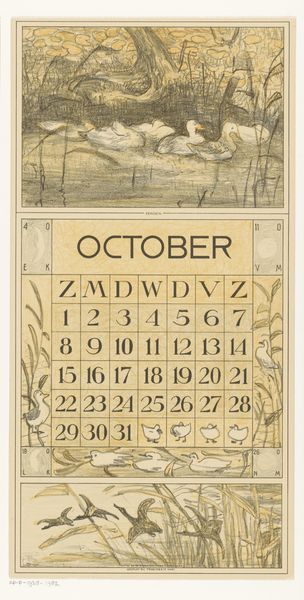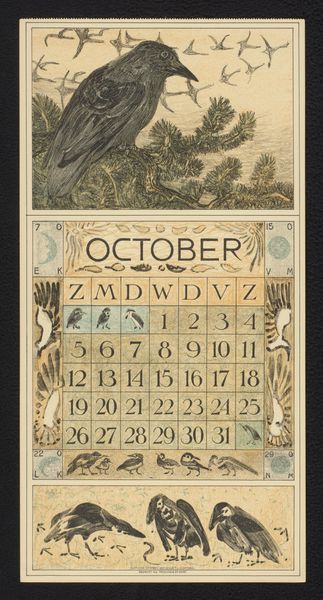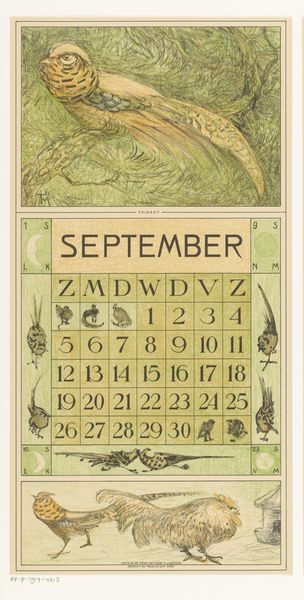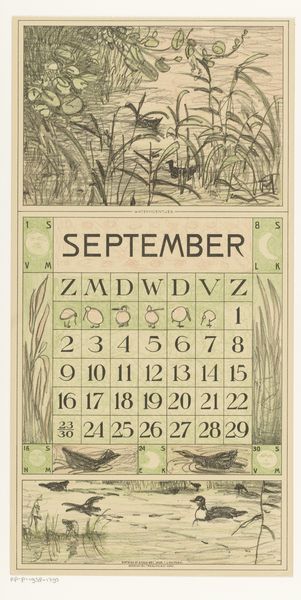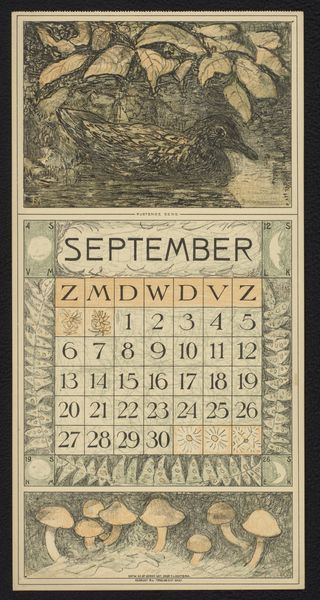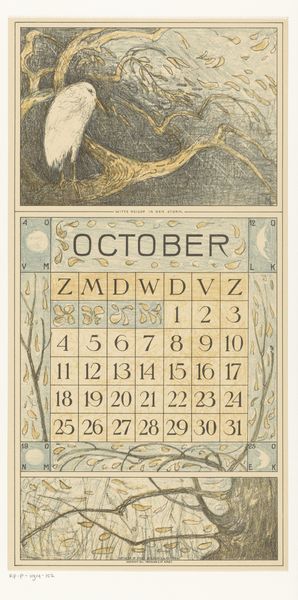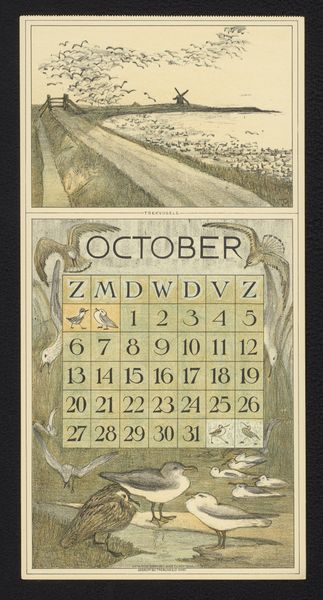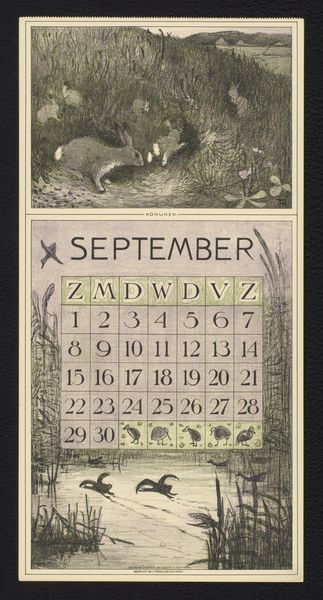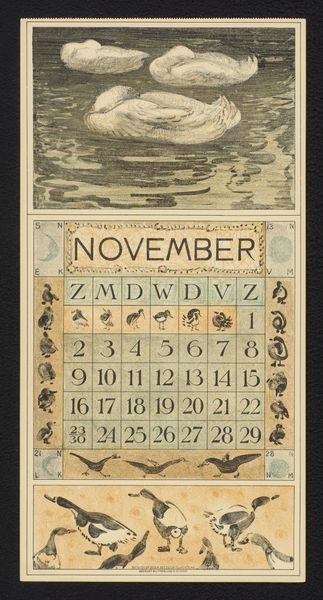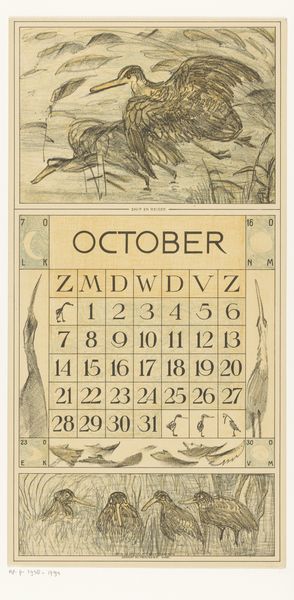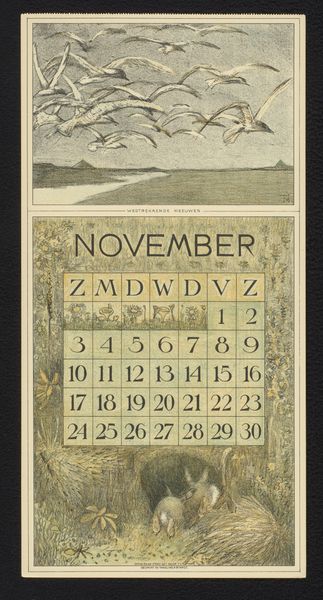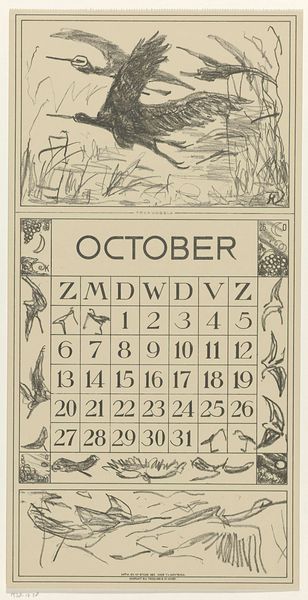
Dimensions: height 418 mm, width 212 mm
Copyright: Rijks Museum: Open Domain
Editor: This is “Kalenderblad voor september 1913 met reigers in het riet,” a calendar sheet for September 1913 with herons in the reeds, created in 1912 by Theo van Hoytema. It’s a drawing on paper using pencil, and I'm struck by the stark contrast between the naturalistic rendering of the herons and the rigidly geometric calendar grid. What draws your attention in this work? Curator: The power of this work resides precisely in that interplay, in the juxtaposition of seemingly disparate systems of representation. Note how Hoytema's linework in the heron panels functions. It's not simply descriptive, aiming to mirror reality. Rather, consider the energetic, almost frantic, quality of the marks. What effect does this hatching create in relation to the birds? Editor: It makes them seem very much alive and present, almost like they're caught mid-movement. They contrast the static rigidity of the calendar itself. Curator: Precisely. The image panels and the calendar form a contrasting dichotomy of representation, naturalistic rendering and symbolic order, movement versus stasis. How does this contrast impact your reading of the work as a whole? Editor: It feels almost like a comment on the way we try to impose order and structure onto the natural world, even though it’s constantly in motion and somewhat chaotic. Curator: A fascinating interpretation! What appears at first glance as a functional object is, upon closer inspection, a subtle yet potent meditation on the human relationship with nature, articulated through line, form, and composition. It showcases a keen awareness of visual language. Editor: I never would have thought about it that way initially, focusing on just how real the birds look! But considering the composition and its contrast definitely brings a whole new dimension. Thank you!
Comments
No comments
Be the first to comment and join the conversation on the ultimate creative platform.
